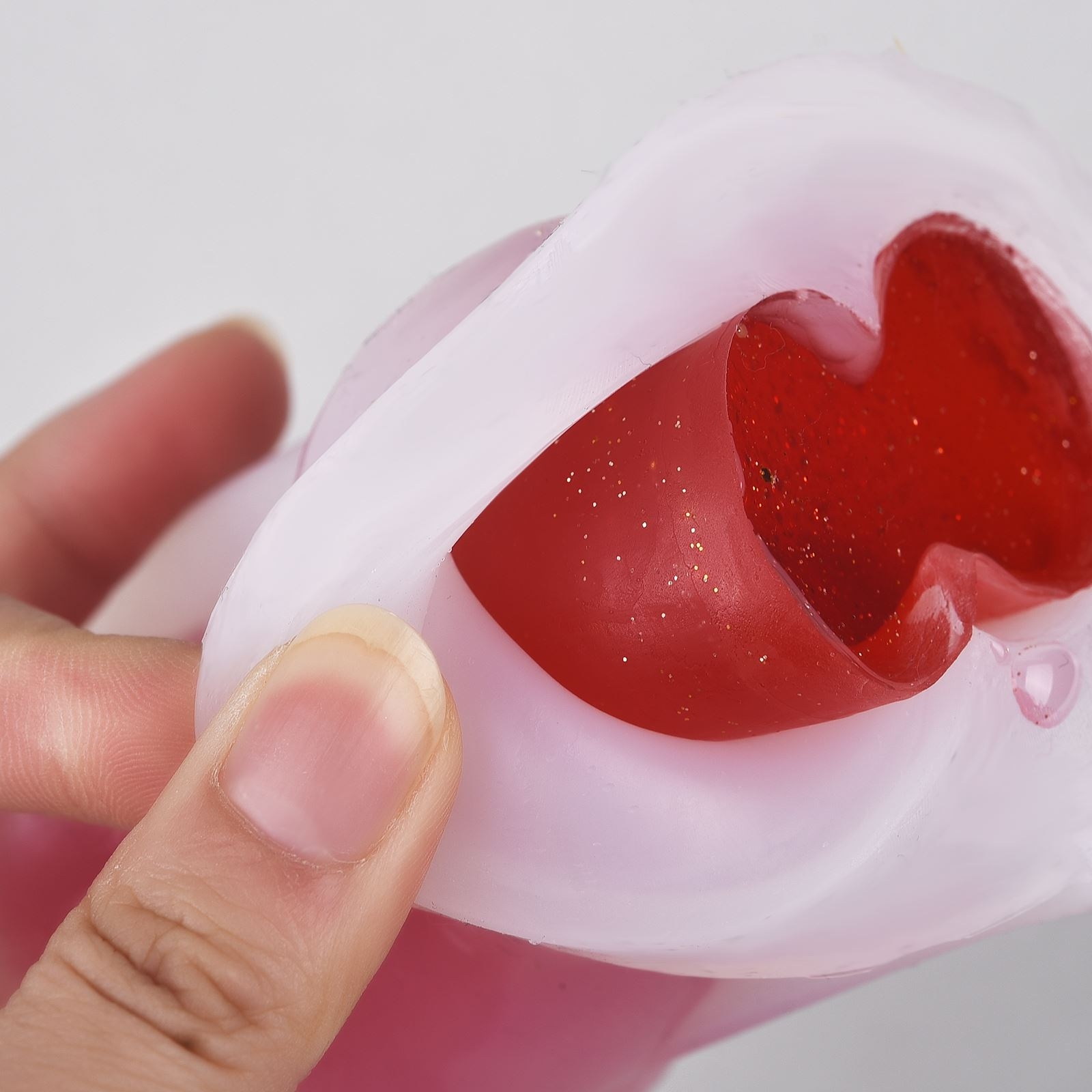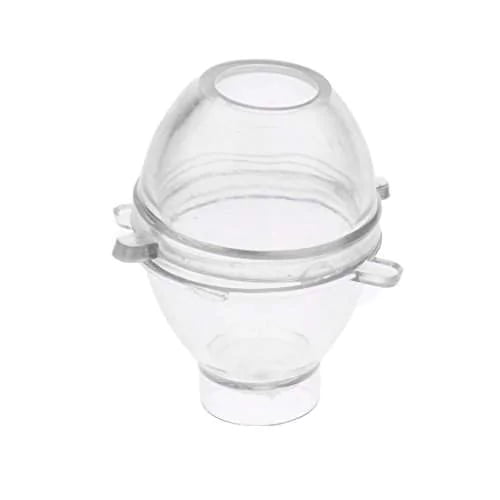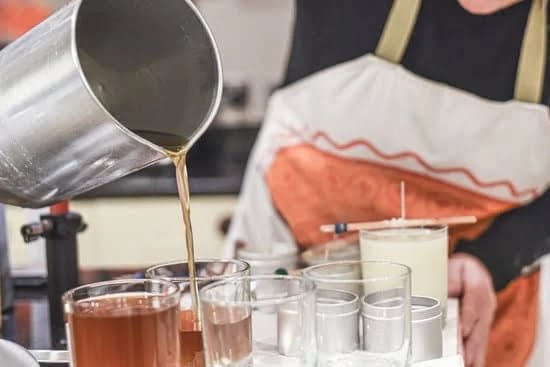Soy candle making has become increasingly popular among DIY enthusiasts and candle makers alike, thanks to the numerous benefits it offers. One crucial factor that significantly affects the outcome of soy candle making is temperatures. The right temperature control can make a substantial difference in the quality and overall success of your soy candles.
Soy wax, derived from soybean oil, has gained a reputation for being a more eco-friendly and cleaner-burning alternative to traditional paraffin wax. Its benefits include slower burning times, stronger fragrance retention, and easier cleanup. These advantages have made soy wax a preferred choice for many candle makers looking to create high-quality, environmentally friendly products.
Temperature plays a vital role in the process of making soy candles. From melting the wax to adding fragrance oils and pouring the candles, maintaining the ideal temperature is essential for achieving optimum results. By understanding how temperature influences different stages of candle making, you can enhance fragrance throw, improve burn quality, and create visually appealing soy candles that stand out from the rest.
Benefits of Using Soy Wax for Candle Making
Soy wax is a popular choice among candle makers for a variety of reasons. One of the primary benefits of using soy wax for candle making is its eco-friendly nature. Soy wax is derived from soybean oil, making it a renewable and biodegradable resource. This means that soy candles are not only better for the environment but also provide a sustainable option for those looking to reduce their carbon footprint.
In addition to being environmentally friendly, soy wax candles also burn cleaner and longer than traditional paraffin wax candles. Soy wax has a lower melting point than paraffin, which allows it to burn at a cooler temperature and release fragrance more slowly. This results in a longer-lasting candle that provides a more consistent scent throw throughout its use.
When it comes to temperature control in soy candle making, the choice of soy wax plays a crucial role. Different types of soy waxes have varying melting points, which can impact the overall quality of the candle. It is important to consider the specific requirements of the soy wax being used and maintain an appropriate temperature during the melting and pouring process to ensure optimal results.
| Benefits | Details |
|---|---|
| Eco-friendly | Soy wax is renewable and biodegradable, making it better for the environment. |
| Cleaner & Longer Burning | Soy wax burns at a cooler temperature and releases fragrance more slowly, resulting in longer-lasting candles with consistent scent throw. |
Importance of Temperature Control in Candle Making
Temperature control is a crucial aspect of candle making, especially when working with soy wax. The temperature at which soy wax is melted and combined with fragrances can greatly impact the quality of the final product. By maintaining the right temperatures throughout the candle-making process, crafters can ensure that their soy candles burn evenly, have a strong scent throw, and possess a smooth and attractive appearance.
Benefits of Proper Temperature Control
Proper temperature control during soy candle making offers a range of benefits. One key advantage is that it helps prevent issues such as frosting, sinkholes, and poor fragrance diffusion. When soy wax is heated to the correct temperature, it melts uniformly and mixes well with fragrances, resulting in a consistent texture and scent throughout the candle. Additionally, maintaining ideal temperatures can also contribute to improved burn performance and overall candle longevity.
Recommended Temperatures for Soy Candle Making
The recommended temperatures for soy candle making typically range between 120°F to 180°F (49°C to 82°C). To achieve optimal results, it is essential to heat the soy wax gradually and consistently monitor its temperature throughout the melting and pouring process.
It is advisable to invest in a reliable thermometer specifically designed for candle making to ensure accuracy when working with different types of fragrances and dyes. By adhering to recommended temperature ranges, crafters can create high-quality soy candles that burn cleanly and emit captivating aromas.
The Ideal Temperature for Heating Soy Wax
When it comes to making soy candles, one of the most crucial factors to consider is the temperature at which you heat the soy wax. The ideal temperature for heating soy wax plays a significant role in ensuring that your candles turn out perfect.
To achieve the best results, it is important to heat soy wax gradually and consistently. Here are some key points to keep in mind when determining the ideal temperature for heating soy wax:
- Start by melting your soy wax flakes or pellets at a low temperature, around 160-170 degrees Fahrenheit.
- Once the wax is completely melted, you can then raise the temperature slightly to around 175-185 degrees Fahrenheit for optimal fragrance dispersion.
- Avoid overheating the soy wax, as this can lead to discoloration or even cause the fragrance oils to evaporate, resulting in a weaker scent throw.
Maintaining a consistent temperature throughout the candle making process is essential for achieving quality candles. Fluctuating temperatures can lead to issues such as uneven cooling, frosting, or poor scent throw. By taking care to monitor and adjust the temperature as needed, you can ensure that your soy candles turn out beautifully every time.
Whether you are a beginner or an experienced candle maker, mastering the art of controlling temperatures for soy candle making is key to producing high-quality candles that burn cleanly and evenly. By following these guidelines and experimenting with different techniques, you can elevate your candle making skills and create unique and fragrant soy candles that will delight all who experience them.
Understanding the Impact of Temperature on Fragrance Throw
The fragrance throw of a soy candle, or how well it fills a room with its scent when lit, is greatly influenced by the temperature at which the candle was made. Understanding how temperature impacts fragrance throw is essential for creating high-quality soy candles that not only look beautiful but also smell amazing when burned.
Temperature and Scent Retention
One of the key factors affecting fragrance throw in soy candles is the temperature at which the fragrances are added to the melted wax. It is crucial to add fragrance oils to soy wax at the right temperature to ensure proper scent retention.
Generally, adding fragrances to soy wax between 170°F and 185°F is ideal, as this allows the oils to bind effectively with the wax molecules, leading to a stronger and longer-lasting scent throw when the candle is burning.
Impact of Cooling Temperature on Fragrance Throw
After pouring the scented soy wax into containers or molds, allowing it to cool at an appropriate temperature is equally important for achieving optimal fragrance throw. Rapid cooling can trap air bubbles in the wax, preventing proper diffusion of scents when the candle is lit.
On the other hand, slow cooling at a controlled temperature not only prevents this issue but also allows the fragrances to fully develop and enhance their presence in the finished candle. Proper cooling techniques are crucial for maximizing fragrance throw and ensuring that your soy candles fill a room with delightful aromas every time they’re burned.
Tips for Monitoring and Maintaining Temperature While Making Soy Candles
Soy candle making requires precise temperature control to achieve the best results. Monitoring and maintaining the temperature throughout the candle making process is crucial for producing high-quality soy candles. The ideal temperatures for soy candle making vary depending on the stage of the process, from melting the wax to adding fragrance oils and pouring into molds.
When heating soy wax, it is recommended to use a double boiler or a dedicated wax melter to avoid direct heat contact, which can lead to uneven melting and potential safety hazards. The optimal temperature for melting soy wax is typically between 160°F and 180°F (71°C-82°C). This range ensures that the wax melts evenly without overheating, which can affect the texture and performance of the finished candles.
Temperature control becomes especially important when adding fragrance oils to melted soy wax. The ideal temperature for this step usually ranges between 130°F and 150°F (54°C-65°C). Adding fragrance oils at higher temperatures can cause them to evaporate too quickly, resulting in a weaker scent throw in the finished candles. Conversely, adding fragrance oils at lower temperatures may cause them to solidify before they are fully incorporated into the wax, leading to uneven distribution of fragrance.
| Soy Candle Making Stage | Ideal Temperature Range |
|---|---|
| Melting Soy Wax | 160°F – 180°F (71°C – 82°C) |
| Adding Fragrance Oils | 130°F – 150°F (54°C – 65°C) |
Common Temperature-Related Issues in Soy Candle Making
When making soy candles, temperature plays a crucial role in ensuring the quality of the final product. However, there are some common temperature-related issues that candle makers may encounter along the way. It is essential to address and troubleshoot these issues to achieve the desired results.
Here are some common temperature-related problems that can arise during soy candle making:
- Frosting: Frosting occurs when the wax cools too quickly, resulting in a white, powdery appearance on the surface of the candle. To prevent frosting, allow the candles to cool gradually at room temperature or use a heat gun to gently melt the top layer.
- Sinkholes: Sinkholes are small indentations that can form in the center of a candle when it cools too rapidly. To avoid sinkholes, pour your wax at a slightly higher temperature and avoid exposing the candles to drafts while they cool.
- Sooting: Sooting happens when a candle burns with a visible black residue. This can be caused by burning the candle at too high of a temperature or using a wick that is too large for the container. Ensure proper wick selection and trimming to minimize sooting.
By being aware of these common temperature-related issues and taking proactive measures to address them, you can improve your soy candle making process and create high-quality candles with consistent results. Remember to monitor and adjust temperatures carefully throughout each step of the candle making process to achieve optimal outcomes.
Advanced Techniques for Achieving the Perfect Temperature for Soy Candle Making
To achieve the perfect temperature for soy candle making, advanced techniques can be employed to ensure consistent results and high-quality candles. One such technique is using a double boiler system to melt the soy wax gently and evenly. This method involves placing a heat-safe container with soy wax inside a larger pot filled with water, which helps control the rate of heating and prevents scorching or overheating of the wax.
Another advanced technique for temperature control in soy candle making is the use of a digital thermometer. This tool allows makers to monitor the temperature of the melted wax accurately, ensuring that it stays within the recommended range for optimal candle quality. By regularly checking and adjusting the temperature as needed, candle makers can avoid issues such as frosting, tunneling, or poor scent throw caused by improper temperatures.
Furthermore, some experienced candle makers recommend preheating containers before pouring melted soy wax to maintain its temperature. This technique can help prevent uneven cooling and adhesion issues, resulting in smooth and professional-looking candles. By incorporating these advanced techniques for temperature management into their candle-making process, artisans can produce high-quality soy candles with excellent burn performance and fragrance throw.
Conclusion
In conclusion, the process of soy candle making is a delicate balance that relies heavily on temperature management. Maintaining the ideal temperatures for soy wax can greatly impact the quality and performance of the candles produced. By understanding the importance of temperature control in candle making, crafters can ensure that their soy candles burn cleanly, evenly, and emit strong, pleasant fragrances.
Achieving the perfect temperature for heating soy wax is crucial in order to create high-quality candles. Too high of a temperature can result in discoloration or uneven burning, while too low of a temperature may lead to poor fragrance throw or adhesion issues. By following recommended guidelines and using a reliable thermometer, candle makers can effectively monitor and adjust temperatures throughout the candle making process to achieve optimal results.
Ultimately, proper temperature management not only enhances the quality of soy candles but also ensures consistency in production. With attention to detail and precision in temperature control, crafters can create beautiful soy candles that not only look aesthetically pleasing but also perform exceptionally well. By incorporating advanced techniques and closely monitoring temperatures for soy candle making, artisans can elevate their craft to new levels and produce candles that are truly exceptional in both appearance and function.
Frequently Asked Questions
Do You Have to Heat Soy Wax to 180?
Heating soy wax to 180 degrees Fahrenheit is not necessary for candle making, but it’s generally recommended to heat it to around 170-185 degrees for proper melting and fragrance dispersion. Going above 200 degrees can result in discoloration and decreased scent throw.
What Happens if You Overheat Soy Wax?
Overheating soy wax can lead to a variety of issues such as the loss of fragrance, discoloration, and poor burn performance. The wax may become brittle or have a rough texture if overheated, which can affect the quality and appearance of your candles. It’s important to monitor the temperature closely during the melting process.
What Temperature Do You Pour Hearth and Harbor Soy Wax?
When working with Hearth and Harbor soy wax, it is typically recommended to pour at temperatures between 130-150 degrees Fahrenheit. Pouring at this range helps ensure good adhesion between the wax and container, as well as optimal scent throw and overall candle performance. It’s always best to follow the specific guidelines provided by the manufacturer for best results.

Welcome to my candle making blog! In this blog, I will be sharing my tips and tricks for making candles. I will also be sharing some of my favorite recipes.




